This is a quick post about Oracle Enterprise Repository (OER) and its usage.
Oracle Enterprise Repository (OER) is one of the most useful resources for Oracle Cloud implementation / development / customization projects. Click on the link to navigate to OER. It is a one stop shop for all of the artifacts related to Oracle Cloud. For e.g., you can search for ADF Services, Views, Tables, Scheduled Processes and many more in OER. You will also get more details about each of these artifacts, including usage, documentation etc.
Navigate to OER
Use this link to navigate to OER. You will see the below page
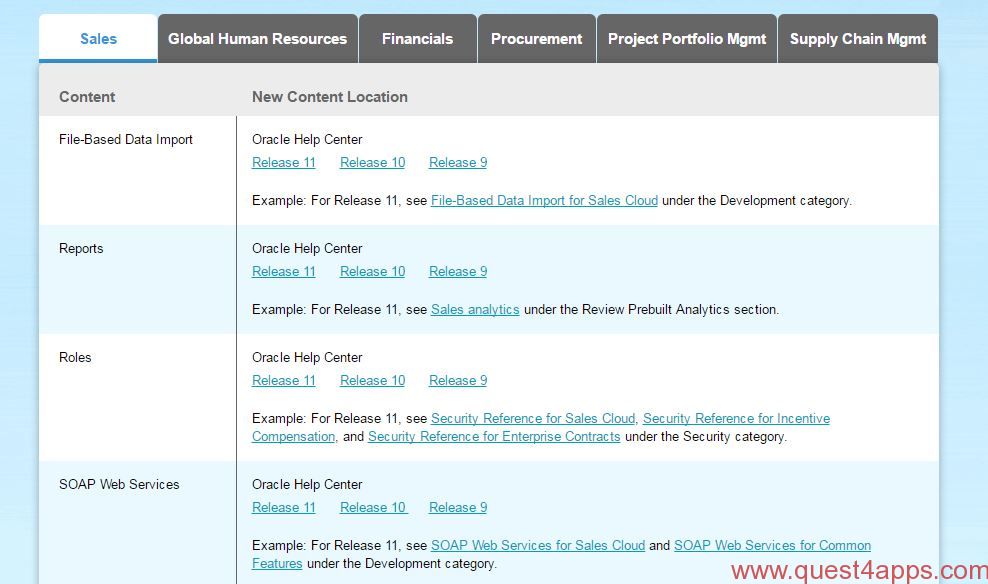
You will notice that the page is categorized by different offerings, namely Sales, HCM, Financials, Procurement, PPM and SCM. Each of the categories is again sub-categorized based on the type of content. These may vary based on the offering. Here are a few examples of the content available:
- FBDI Templates
- Reports
- Roles
- Web Services / ADF Services
- Scheduled Processes
- Tables and Views and so on
The content available in OER is equally useful for End Users, Functional Consultants, DBAs / System Administrators and Developers. You have the option to see the details of the artifacts from prior releases also.
Oracle Cloud Applications Documentation
You can also navigate to the cloud documentation page from the OER landing page. Click on this link to navigate to the cloud application document page.
The link will take you to the below page:
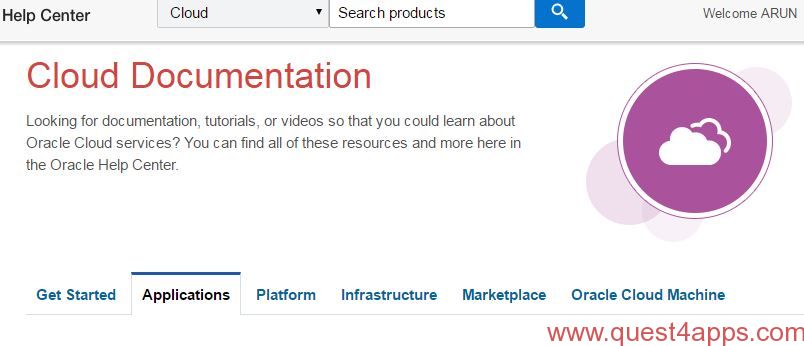
Once you are in the Cloud Documentation page you have the option to navigate to the documentation for the specific application that you are working on. Lets take the example of Financials in this blog. See the below screen shot for more details:
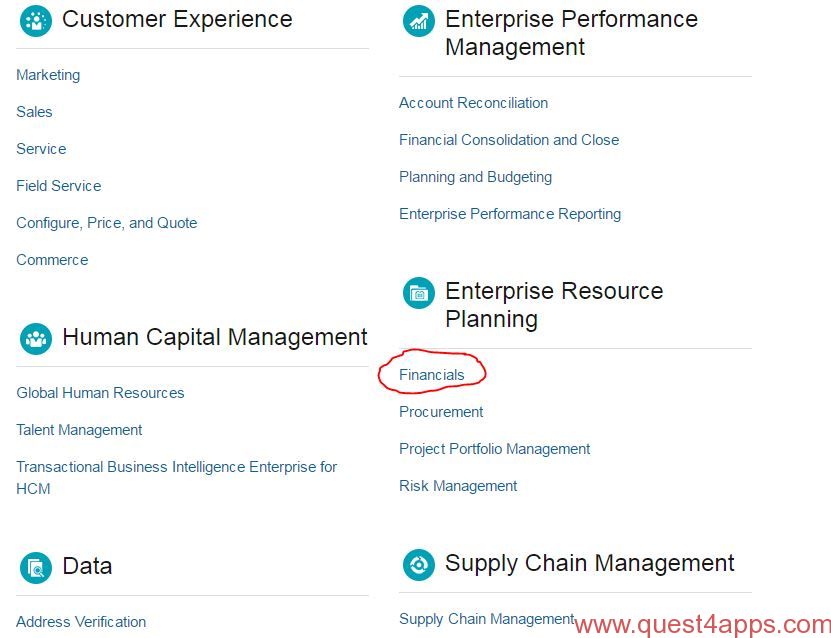
Click on Financials link and it will take you to the documentation for Oracle Cloud Financials offering. On left side of the navigate pane you will see link to various topics.
The links are categorized based on the taks performed by a user. If you are an end user you can click on Use and it will take you to documents related to “How To Use the various features or business processes in the system“. If you click on Implement it will take you to documents related to “how to implement Oracle Cloud Financials“. As you can see it is very easy for you to find the right kind of document from OER or Oracle Cloud documentation.
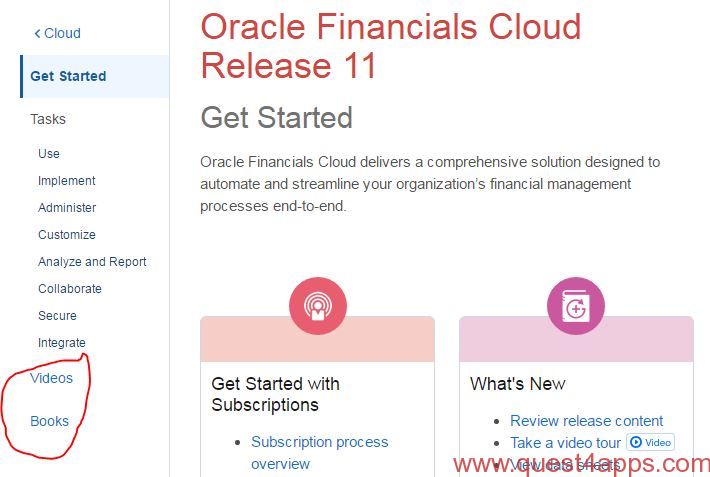
You will also notice links to Books and Videos. Videos will take you to sample video tutorials of the various features in Oracle Cloud Financials.
If you click on “Books“, you will be redirected to the various documents available.
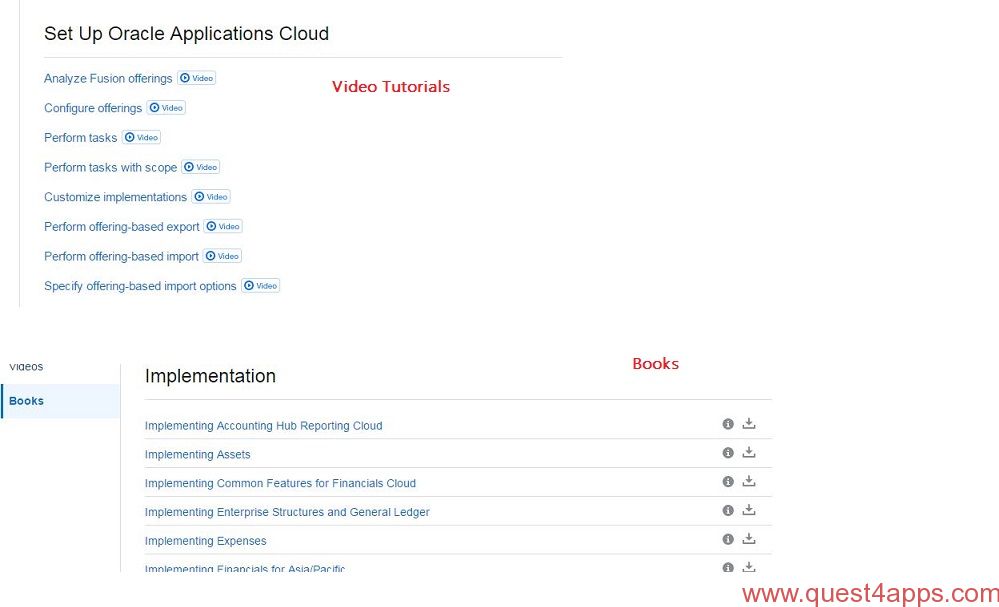
Handy tip:- If you are a developer, navigate to books and scroll all the way down to the bottom of the page and you will see the most beautiful view. Ha ha. Well that is where you will find all the useful information for development.
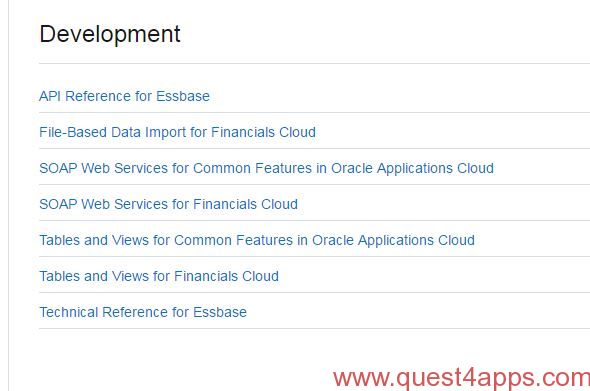
Conclusion
As you may have already noticed, OER has all the relevant information that you may need if you are working on Oracle Cloud or Oracle Fusion Applications. This was just a quick look at OER and how it can help you. It is useful for users ranging from End Users to Developers. There is a wealth of information, you just have to start exploring.
I hope you found this blog useful. If you have questions on OER, please feel free to comment. Happy learning and have a good one!!




Questions? Comments? Suggestions? Let us know!! Like / Subscribe / Follow for more updates.